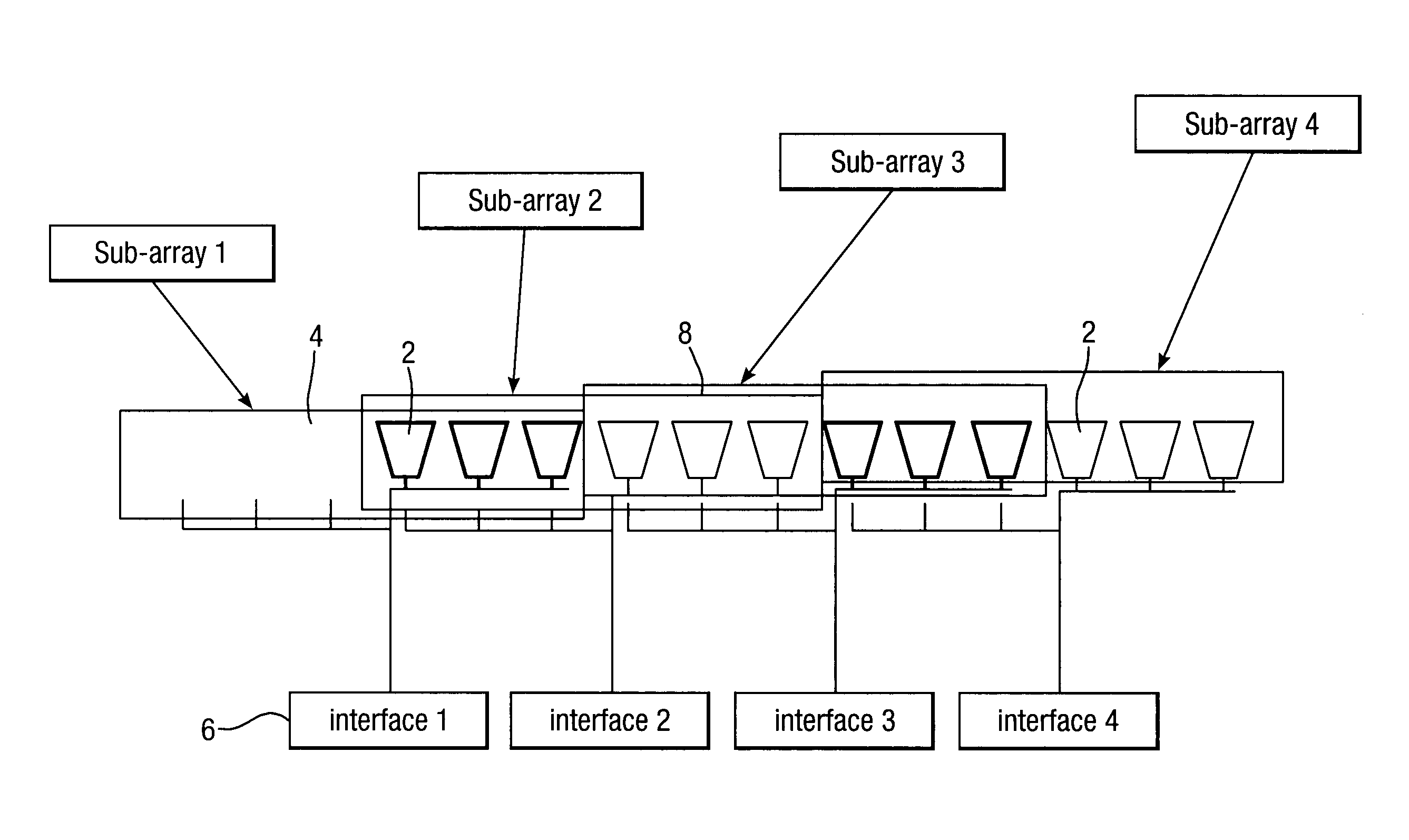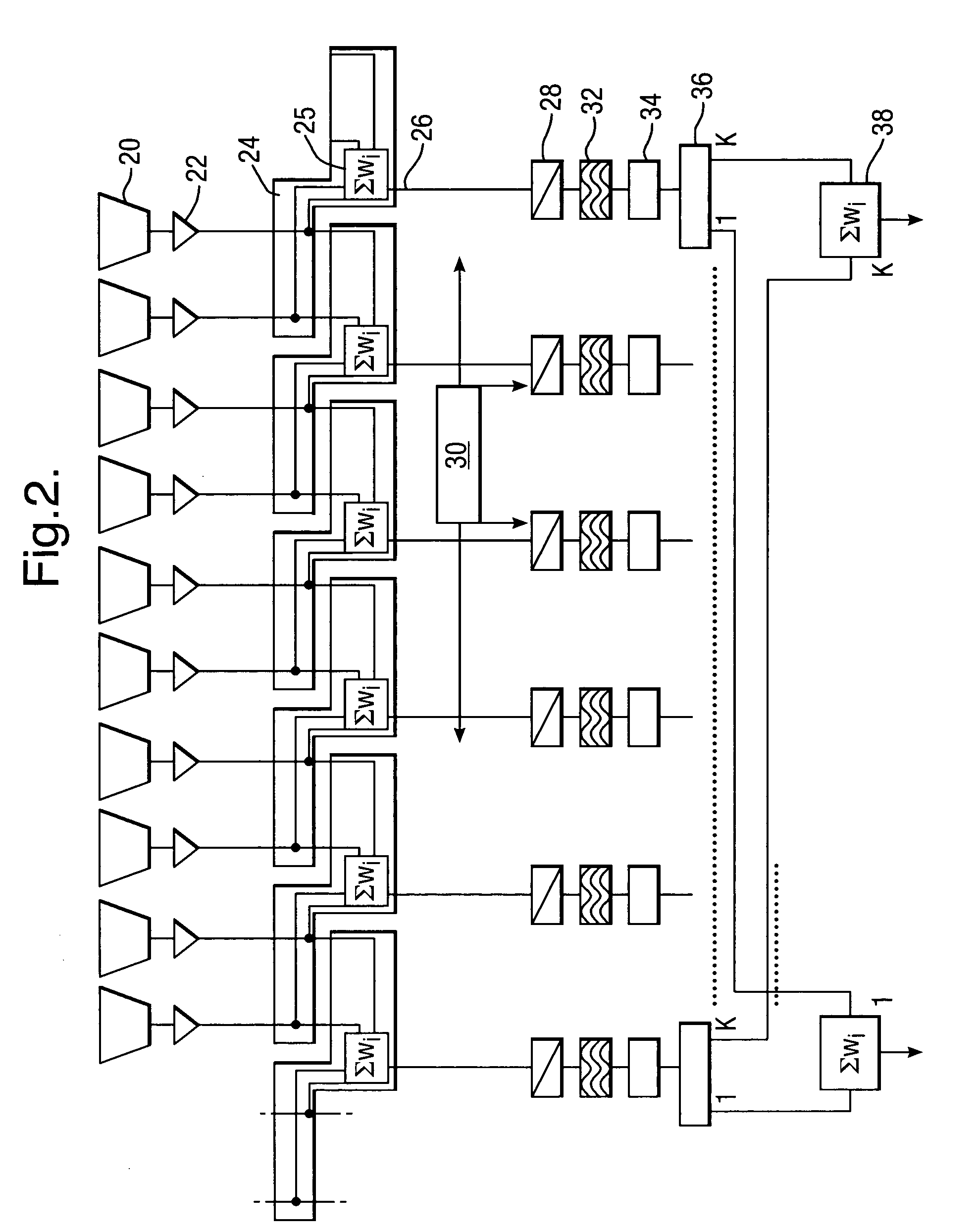System for simplification of reconfigurable beam-forming network processing within a phased array antenna for a telecommunications satellite
a technology of phased array antenna and network processing, which is applied in the direction of individual energised antenna array, particular array feeding system, transmission, etc., can solve the problems of increasing demand, increasing beam-forming complexity and cost, and complex phased arrays, so as to simplify the beam-forming function of phased array and simplify the processing
- Summary
- Abstract
- Description
- Claims
- Application Information
AI Technical Summary
Benefits of technology
Problems solved by technology
Method used
Image
Examples
example
[0081]Referring to FIG. 8, this shows a desired arrangement for European coverage, of 100 spot beams, Boresight pointed to 17° E, 48.5° N, from geostationary location at 7° E
[0082]For the initial design considerations of the antenna:
[0083]Begin with a DRA aperture of 2.4 m (comparable to the size of an AFR reflector), element spacing 2.12 wavelengths. Element spacing determines how much performance the antenna loses when it is scanned. That is, the drop-off in performance of each individual element between the centre and the edge of the earth results in an irrecoverable performance loss. On the other hand, the smaller the elements, the more of them are required, so, there is a trade off which usually for geostationary satellites results in an element size in the range 2-3 wavelengths.
[0084]Coverage has extent 6.75° E / W, 3.12° N / S
[0085]Element 2.12 wavelength, decimation into overlapping sub-arrays by 3 E / W and 6 N / S on a square element lattice is attempted.
[0086]This results in an a...
PUM
 Login to View More
Login to View More Abstract
Description
Claims
Application Information
 Login to View More
Login to View More - R&D
- Intellectual Property
- Life Sciences
- Materials
- Tech Scout
- Unparalleled Data Quality
- Higher Quality Content
- 60% Fewer Hallucinations
Browse by: Latest US Patents, China's latest patents, Technical Efficacy Thesaurus, Application Domain, Technology Topic, Popular Technical Reports.
© 2025 PatSnap. All rights reserved.Legal|Privacy policy|Modern Slavery Act Transparency Statement|Sitemap|About US| Contact US: help@patsnap.com



